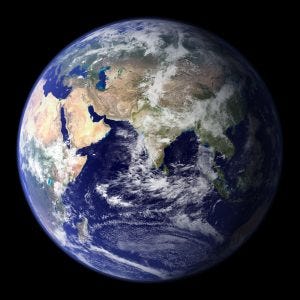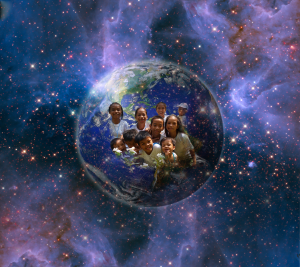
This post follows on from several articles on this theme, for details of which see footnote (1).
The idea of the earth as a superorganism re-emerged in modern times with the work of the independent scientist James Lovelock and his Gaia hypothesis (2). This was developed further by the spiritually oriented writer Peter Russell in The Awakening Earth (3).
When Lovelock published the first edition, where he described the Earth as a kind of self-regulating, living organism, he was attacked by biologists who said that this could not have emerged through a process of natural selection, thus contradicting Darwinian theory, the dominant biological paradigm. Even worse, “one critic referred to it scathingly as a fairy story about a Greek goddess” (4). These are statements typical of modern materialist, Enlightenment science for, as Lovelock says, “the idea of Mother Earth or, as the Greeks called her, Gaia, has been widely held throughout history and has been the basis of a belief that coexists with the great religions” (5).
Nature at the time was seen as “red in tooth and claw”, and “survival of the fittest” was a key idea in a struggle for survival. This viewpoint may seem true at one level to a casual observer. From a higher perspective, however, taking into account the whole picture from the point of view of Gaia, this brutality can perhaps be seen as cooperation in nature; the death of one creature enabling another to survive would be an essential ingredient in the ongoing process of life. Lynn Margulis, a colleague of Lovelock and fierce critic of Darwinism, believed something along those lines, and developed the concept of symbiosis, or cooperation in nature.
New material on this theme is now being added. Peter Wohlleben has recently written The Secret Network of Nature (6). Here are some quotes from his introduction:
- “Nature is like a giant clockwork mechanism. Everything is neatly arranged and interconnected. Everything has its place and its function”.
- “All animals and plants are part of a delicate equilibrium, and every entity has its purpose and role in its ecosystem”.
- “Nature is much more complex than a clock. In nature, not only does one cog connect with another: everything is connected in a network so intricate that we will probably never grasp it in its entirety” (his italics).
As an example, he describes the role of wolves in Yellowstone National Park. They may appear as murdering predators to us (red in tooth and claw), but Wohlleben shows how they play an essential role in maintaining the balance in the ecosystem (symbiosis). They were eradicated from the park in response to pressure from ranchers. This enabled the elk population to increase, the consequence of which was that “large areas of the park were stripped bare by the voracious animals. Riverbanks were particularly hard hit. The juicy grass by the river disappeared, along with all the saplings growing there. Now this desolate landscape didn’t provide enough food even for birds, and the number of species declined drastically”, for example, beavers disappeared. When wolves were reintroduced, they again preyed on the elks, and things began to return to normal (pp5–6).
This just goes to show what happens when ignorant humans, who understand nothing of the above, and who have lost all sense of their connection to nature, are allowed to act, motivated purely by their own selfish interests.
If the Earth is indeed this intricate superorganism, it is hard to see how this could have arisen through the blind, random, purposeless processes that neo-Darwinians assure us are the reality of evolution. That is obviously the reason why those biologists reacted so strongly to Lovelock’s hypothesis. If each individual planetary citizen recognises that he or she is the equivalent of one of its brain cells, we can act accordingly, and start to take responsibility for the healing of Gaia.

Footnotes:
(1) Relevant articles:
The first one is preparatory: The Superorganism – a Challenge to Materialist Science
More important are: Is the Earth a Superorganism?
and: Humanity as Part of the Superorganism
If you’ve read as far as that, you might also be interested in: The Role of the Citizen in a Spiritual Society
(2) Gaia: a New Look at Life on Earth, first edition 1979, second edition 1987, reissued 1995, OUP
(3) Routledge & Kegan Paul, 1982
(4) 1995 edition, Pxii
(5) 1995, Pxiv
(6) translated by Jane Billinghurst, The Bodley Head, 2018